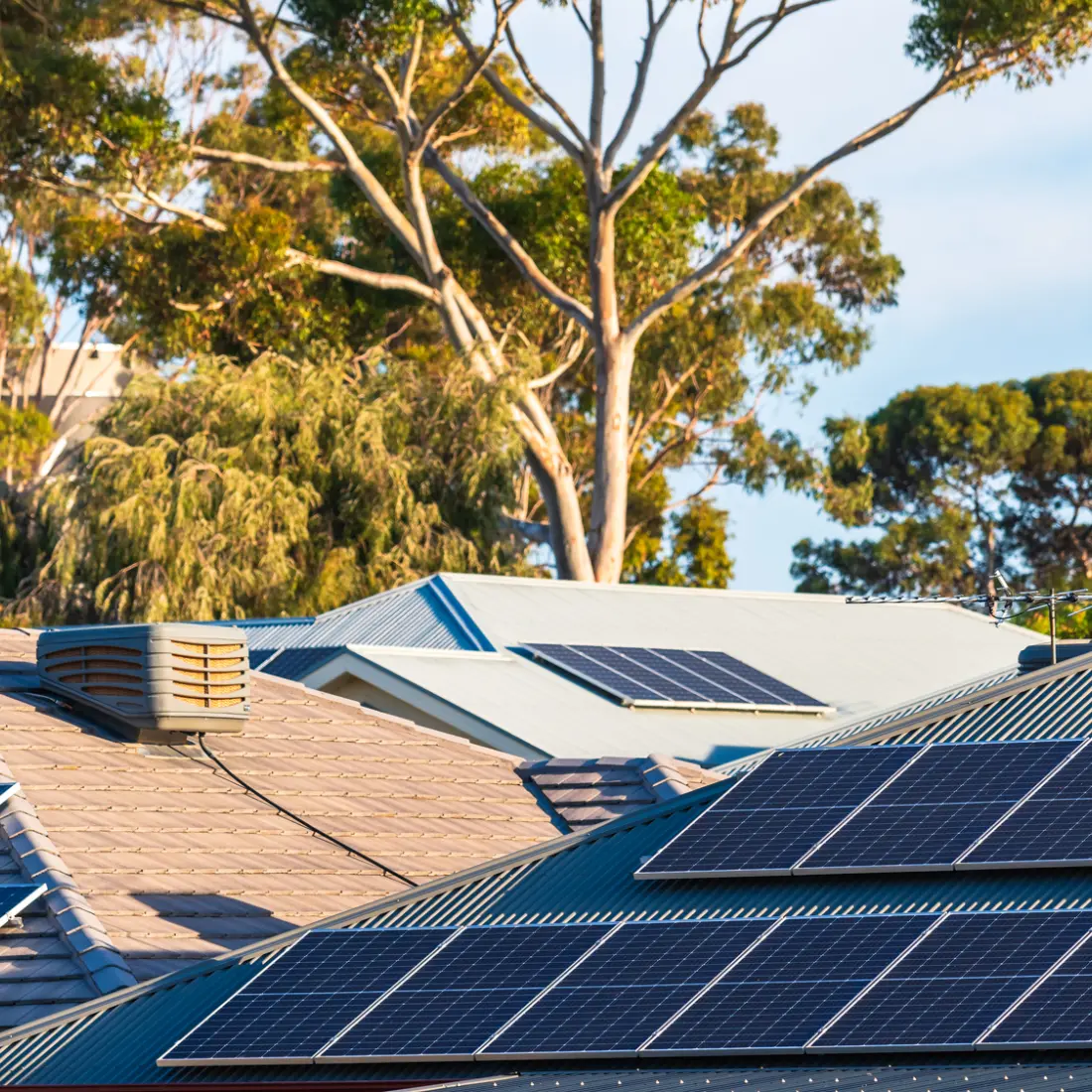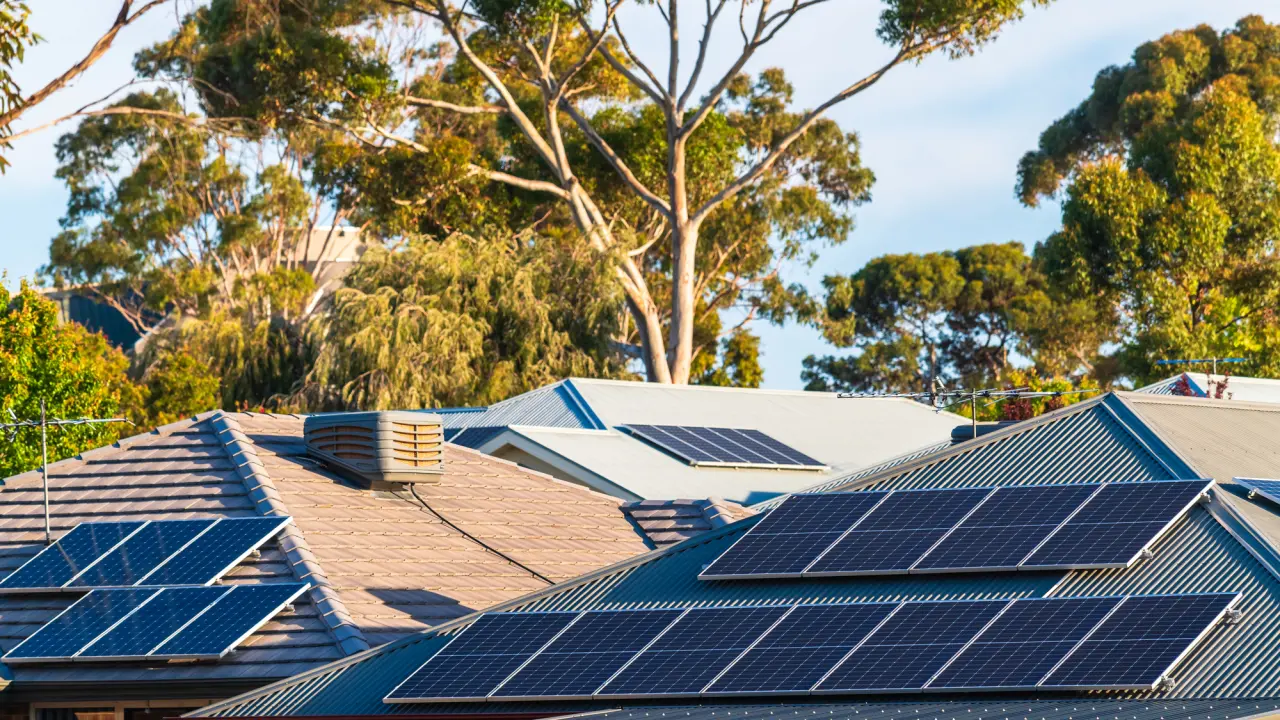Achieving household energy independence


Energy independence refers to eliminating or reducing your need to work with utility companies to provide electricity. With complete energy independence, you no longer need to work with a local utility company. With partial energy independence, you receive a lower bill because you provide a portion of your energy through investments like solar panels.
Reducing dependence on traditional power grids can benefit companies concerned about meeting customers’ power demands. This also benefits households that can enjoy increased stability and potential monetary savings. Learn more about making your household more self-sufficient.
The journey to household energy self-sufficiency
There are two key steps to make your household more sufficient: reducing electricity consumption and investing in renewable energy production.
Identify the main contributors to your electricity bill and take steps to improve efficiency. For example, air conditioning accounted for about 19% of the average household’s electricity bill in 2020. However, this percentage can be much higher in the summer months and in states with warm climates. Reduce your electricity bill by investing in better insulation and setting your thermostat to higher temperatures.
Next, invest in renewable power. Tap into wind, geothermal or solar power for your home. Solar power is one of the easiest options to invest in. You can mount the panels on the roof or the ground and produce your own energy.
The role of solar power in energy independence
Solar power supports energy independence by allowing you to directly harness the sun’s rays. Instead of receiving power from a local utility provider, you can generate your own power.
Homeowners install solar panels on their roofs or mount them in their yards. Other than routine maintenance, these panels can continue operating for years. Solar power is considered an easy and affordable way to invest in self-sufficient renewable energy.
Technology is always advancing, and solar panel development is no different. Solar panels have come a long way in maximizing efficiency, and researchers are exploring newer and better ways to create solar systems for the consumer market. This will expand their value in the future.

Economic benefits of household energy independence
The average American household will notice significant economic benefits from investing in solar panels. Not only can they enjoy the peace of mind that comes with energy independence, but they also save money in multiple ways.
- Solar panels can immediately reduce their energy bills, reducing this line item in their budgets.
- They don’t have to worry about utility companies raising rates and won’t feel as much of an impact if billing processes change.
- Households can save money on their taxes by taking advantage of renewable energy tax credits.
Not only can you see a return on your solar panel investment, but you can also increase the stability of your finances from jumps in rates or unexpectedly high utility bills.
Calculating the return on investment for solar power
Follow these steps if you want an idea of what your level of energy independence will be and your estimated ROI from solar installation. This can help you plan project costs and understand the benefits.
-
- Estimate your project costs: most families need between 17 to 25 solar panels, bringing your project cost to around $10,000 to $30,000.
- Calculate your tax credit: this will tell you how much you save on your taxes from solar installation.
- Determine your monthly savings: you can find online tools that estimate your solar production based on your location. You can compare this output with your annual consumption.
- Consider this impact on your electric bill: for example, your solar production could cut your electricity bill in half.
- Track your ROI break-even point: this is how long it will take for the energy savings to pay off.
Using example numbers, if you spend $15,000 on solar panels and receive $4,500 in tax credits, then your target break-even point is $10,500. If you save $700 per year on your electricity bills, it will take 15 years to break even. Considering solar panels are designed to last more than 25 years, this would give you a decade of profit.
Environmental impact of energy independence
Investing in renewable energy can benefit the environment and lower your carbon footprint. Only 21.4% of electricity produced in the United States comes from renewable resources, while 60% comes from fossil fuels. You can contribute to America’s reduction in fossil fuel consumption by generating renewable power.
When more households and businesses invest in solar adoption, they can reduce pollution because fewer toxic chemicals are burned and released into the atmosphere. The land is also protected because it isn’t stripped of resources through harmful mining and oil drilling practices. Energy independence means cleaner air, greater biodiversity, and a healthier planet.
These efforts can also support your neighbors by promoting grid resilience. Others who cannot afford solar adoption can enjoy a more stable grid because there are fewer households on it.
Challenges and considerations for energy independence
Despite the value solar installation provides, this investment has some drawbacks. There is the average cost, mentioned above. Even though they provide clear energy savings, it takes time to realize the ROI.
Solar panels are also more efficient in some regions than others. If you live in a cooler climate, your panels might not perform as you expect. You must also invest in regular maintenance to keep them running at their best.
Despite these concerns, many Americans can go solar and benefit from energy independence, even if they don’t eliminate their bills. The idea that these benefits are limited to hot, sunny climates is a myth.
Achieving 24/7 energy independence
One concern that homeowners have when installing solar is keeping their systems running at night or during rainy days. One solution if you want to maintain energy independence 24/7 is to invest in solar battery storage systems. These systems give you more flexibility to use your harnessed power when needed, so you don’t rely on the grid in the evenings and during short winter days.
These stage systems can also provide a backup power source during outages. When your neighborhood goes dark, you can keep the lights on.
Overcoming obstacles to household energy independence
If you feel there are too many barriers to solar adoption and energy independence, know that other homeowners have faced similar situations. There are plenty of solutions and workarounds available.
- Your roof is too steep or too old: many solar contractors can get creative with site selection and even consider mounted panels on the ground if your roof won’t work.
- The panels are too expensive: you might be able to work with solar co-ops to buy panels at reduced rates or invest in a community solar project.
- The panels are inefficient: while the current options might not meet your needs, emerging technologies will make independence more accessible to the average homeowner.
Installing solar panels might not eliminate your utility bill, but they can reduce it while lowering your carbon footprint. You can enjoy the peace of mind that comes from not being completely dependent on the power grid.